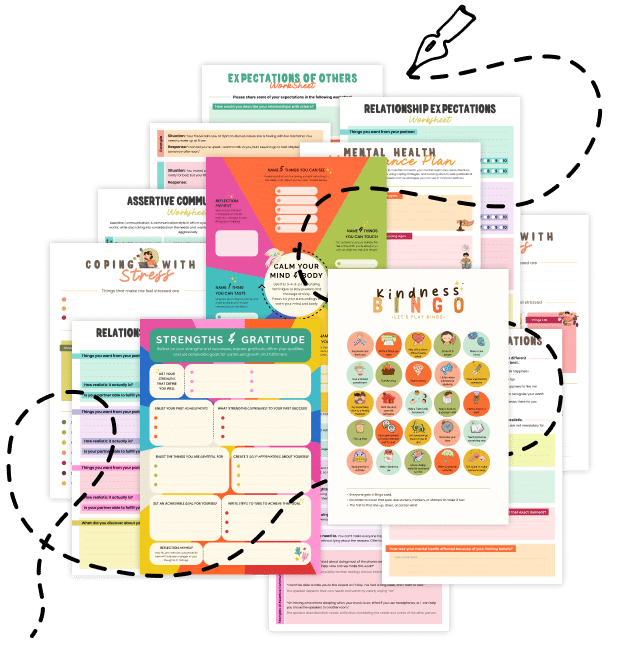20 Things You Should Know About Memory Scaffolding
Discover how Memory Scaffolding helps you build, reinforce, and retrieve new information by using structured supports—whether you’re studying for exams or mastering new skills at work.
1. What Is Memory Scaffolding?
Memory Scaffolding involves creating supportive frameworks—like outlines, cues, or structured steps—that help you learn and recall information more effectively. Think of it as the mental “blueprint” you build to hold new knowledge in place.
2. Why Memory Scaffolding Works
A scaffold guides your mind, breaking down complex content into manageable parts. By organizing information in a meaningful sequence, your brain has less cognitive load to juggle, boosting both understanding and recall.
3. From Education to Everyday Tasks
Teachers often use scaffolding techniques—like guided notes or hint-based questions—to gradually transition students to independent problem-solving. But the concept applies to any learning context, including job training, hobbies, and even everyday tasks like cooking a new recipe.
4. Anchoring to Prior Knowledge
One hallmark of Memory Scaffolding is connecting fresh details to what you already know. Linking new facts to familiar concepts creates stronger mental “bridges,” making information easier to retrieve later.
5. Metacognition in Action
When you scaffold your learning, you’re employing metacognitive skills—actively thinking about how you learn. Self-monitoring and adjusting your study strategies keep the scaffold balanced and effective.
6. Reducing Cognitive Overload
Complex tasks can overwhelm working memory. Scaffolding simplifies the load by dividing the material into smaller chunks, so your brain isn’t juggling too many elements at once.
7. Scaffolds Take Many Forms
- Graphic Organizers: Flowcharts, mind maps, and tables.
- Step-by-Step Guides: Breaking procedures into sequential actions.
- Cue Cards & Checklists: Quick reference reminders to jog your memory.
8. Memory Scaffolding Supports Long-Term Retention
Scaffolding isn’t just for immediate understanding—it also aids long-term memory consolidation. Structured repetition and review layers new information onto established schemas in the brain.
9. Gradual Release of Responsibility
Effective scaffolding means you don’t rely on supports forever. Over time, you remove or reduce prompts, encouraging more independent recall and problem-solving.
10. Role in Collaborative Learning
Study buddies or teams can scaffold each other’s understanding. By explaining concepts to one another, each person offers supports—correcting, asking questions, or providing additional examples.
11. Personalizing Your Approach
Not all scaffolds fit everyone. Some prefer visual aids; others thrive with checklists or mnemonic phrases. Tailoring scaffolds to your learning style maximizes memory benefits.
12. Beware of Over-Scaffolding
Providing too many hints or resources can weaken your ability to remember. Balance is crucial: enough structure to guide, but enough challenge to build cognitive resilience.
13. Memory Scaffolding Application in Workplace Training
Onboarding new employees? Scaffolding via mentorship programs, detailed procedure docs, and interactive workshops can hasten skill mastery while easing information overload.
14. Digital Tools Can Help Memory Scaffolding
Apps and software that chunk information—like spaced repetition flashcards or project management boards—act as digital scaffolds. They remind you what to review and when to review it.
15. Linking Scaffolding to Goal Setting
When setting goals, break them into tiers or checkpoints (Tiered Goal Setting, 97). Each checkpoint serves as a scaffold that moves you to the next level with clarity and confidence.
16. Emotion and Memory
Scaffolding also reduces anxiety—knowing you have a structured plan can alleviate stress about forgetting. Lower stress levels further enhance memory performance and retention.
17. Continuous Feedback Loops
Regular check-ins—self-quizzes, peer reviews, or practice tests—let you adjust your scaffolds. If recall is weak in a certain area, you can add more support or reframe existing cues.
18. Self-Explanation Effects
Teaching the material to yourself or someone else (like “thinking aloud”) is a powerful scaffold. It forces you to articulate the steps or logic, deepening your understanding and strengthening recall.
19. Lifelong Skill
From child learners to seasoned professionals, everyone benefits from scaffolding. The principles remain the same—strategically structure how you engage with and revisit new material.
20. Related Topics to Explore
- Conceptual Chunking: Discover how grouping related ideas eases cognitive load and boosts memory.
- Spacing Effect: Enhance long-term recall by spacing out your reviews—perfect for scaffolded practice.
- Active Recall vs. Passive Review: Learn why testing yourself is more effective than re-reading.
- Metacognitive Monitoring: Fine-tune your scaffolds by regularly assessing how well you’re learning.
Quick Tips to Boost Memory Scaffolding
- Start with an Outline: Sketch a rough map or outline before diving into the details.
- Use Visual Aids: Employ color-coding, icons, or diagrams to group related information.
- Create Step-by-Step Guides: For processes, draft a short list of steps to keep you on track.
- Review Regularly: Schedule quick check-ins to ensure your scaffolds remain helpful and update them as needed.
- Gradually Remove Supports: As you gain mastery, phase out some scaffolds to strengthen independent recall.
Memory Scaffolding transforms the learning process from a jumble of facts into a clear, structured journey. By linking new information to existing knowledge, breaking tasks into smaller chunks, and gradually removing supports, you empower your mind to retain—and use—what you’ve learned more effectively. Share this guide with friends, classmates, or coworkers—help them discover the power of scaffolding to build a stronger, more resilient memory!


